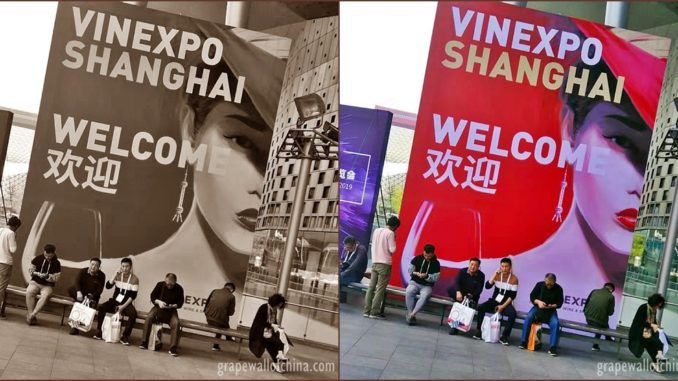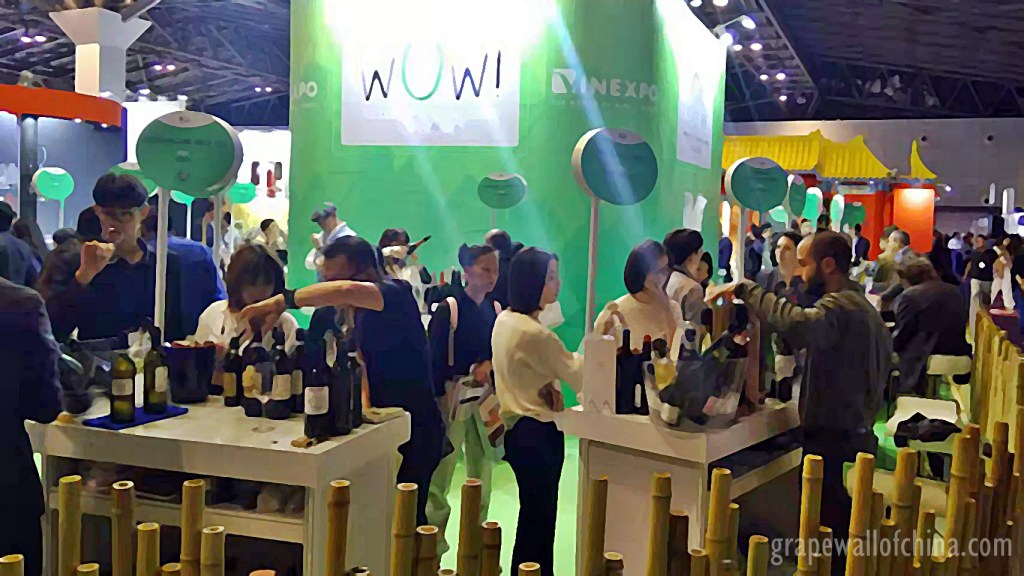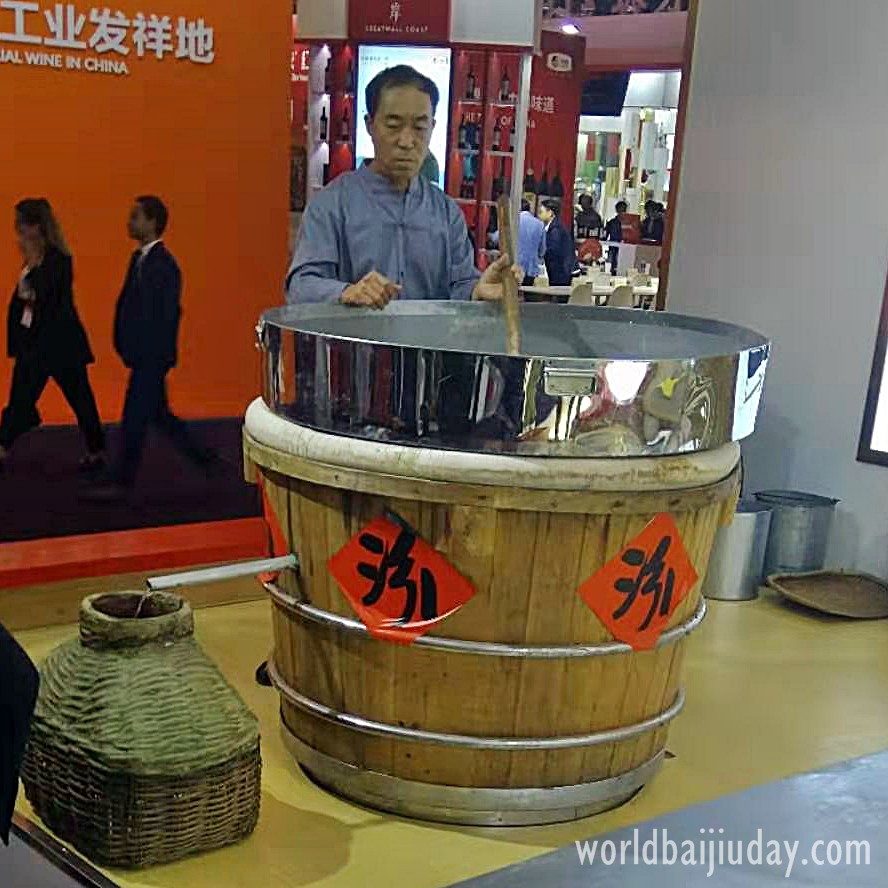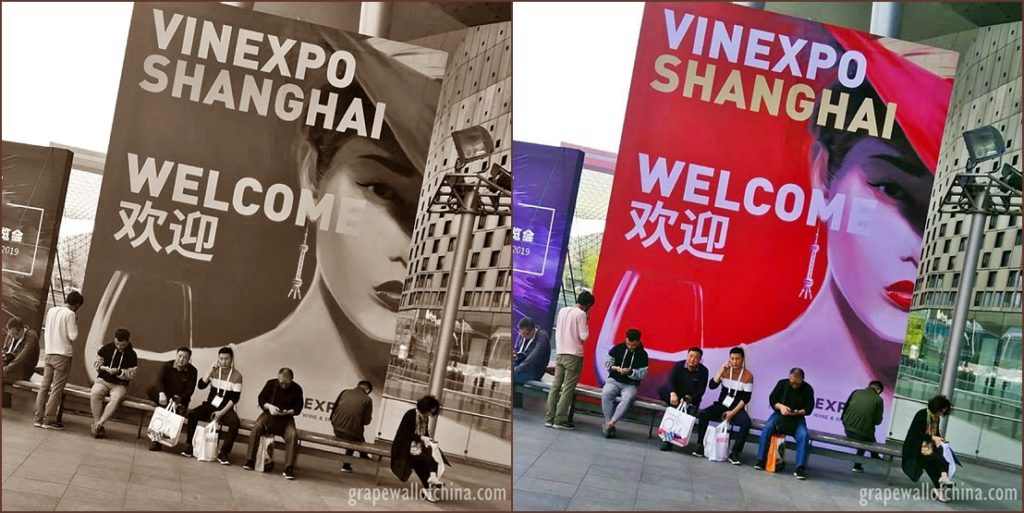
(It’s been a busy few weeks, with visits to continental China’s first Bordeaux Fete le Vin in Miyun County, plus Vinexpo in Shanghai, the Hilton Wine Festival in Beijing and wineries Huadong in Shandong and DFC in Hebei. I’m slowly getting up posts about all of them.)
I saw some WeChat grumbling about the inaugural VinExpo Shanghai, held last week, October 25 to October 27. People said there are too many wine fairs in China, especially in Shanghai, including ProWine just over the horizon. People said they heard attendance was low and the venue nearly empty. People said other cities provide better options and posted photos of masses rushing into a Tianjin wine fair. People said etc.
I went to the first 1.5 days of VinExpo, primarily to try Lafite‘s new China wine, Longdai, served alongside six of the company’s labels from France, Chile and Argentina — post coming soon.

In the meantime, here are five observations of VinExpo from a guy who rarely attends fairs, who is neither importer nor distributor, and who only joined one talk / tasting (Lafite!). I didn’t see any of the organizers, either, until my last 10 minutes at the fair, when I ran into former ASC Fine Wines co-owner Don St Pierre, Jr, who sits on the board. So this is some off-the-cuff modest-amount-of-context stuff.

1 I tried a lot of Chinese wine, including from what are arguably the two key big projects this year — Ningxia’s Xi Ge, attending as part of a larger Qingtongxia presence, and Hebei’s Shi Bai Pian and Domaine Franco-Chinois, with 15 wines. I also tried wines from Fangshan, Jilin, Shandong and Shanxi with winemaker David Tyney and friends. For newbies to China wine, or anyone seeking calibration, this was a good event.

2 The fair was relatively small and some people cited the modest presence of Australian, Spanish and other wines. But there were gems, including wineries seeking China distributors. New Zealand’s Spy Valley was one, with a nice range of wines, including the Envoy Pinot Gris that the team paired with mini peanut-chocolate bars. Another, Robinson & Sinclair from South Africa, had a dozen or so labels, including tasty Mooiplaas from Stellenbosch. Lots of other nice drops, too, including Italy’s Torre Zambra and the US’ Charles Smith.

3 The WOW area featuring organic / biodynamic / natural wine was a fun zone, with brands from a half-dozen countries. I tried wines from France, Italy and Australia–spent some quality time talking to the GemTree guys. I had one French wine that seemed perfect for that emerging niche of drinkers seeking something tasty with low intervention and production, and a good story–a Cabernet Franc (love this grape) made using amphora and no sulfur.

4 There was lot of floor space given to large sprawling displays for baijiu brands like Fenjiu, Niulanshan and Wuliangye.. (Of course, I told them about my World Baijiu Day project. Of course, they told me it sounded interesting and they should get involved. Of course, I told them their companies had contacted me before and nothing came of it. Of course, they told me there must be some kind of miscommunication problem. This feels like my personal Sisyphean situation.)

5 After seeing online criticisms about attendance, I did ask a half-dozen vendors about their experience. Most were neutral or positive, saying that while the show wasn’t crowded, they had met quality importers / distributors. And while those big baijiu producers created empty space, there was a steady flow of tasters at booths like Gallo (it was busy every time I passed), DFC (same), Bordeaux Wine School (with its casino-type game), WOW (a highlight) and others.
(UPDATE: “It’s the first ‘quality ‘ show I’ve been to in China,” said Tyney, after I published this post. He’s made wine in China seven years and is known for New Zealand brand Cirro. “Meaning, organized, clean, and looked professional. I don’t mean from a big brand point of view. But I enjoyed the couple of days I was there.”)
Again, these are just my observations, as someone who doesn’t produce, export or distribute wine. But overall, the vibe seemed good. The last show I attended was TopWine in Beijing, which was much bigger but–at least on the first day–emptier. I also heard more complaints from vendors there.
Finally, Vinexpo Shanghai seems important from a broader point of view. I’ve been hearing for years it was coming to continental China, including the last few during which France lost its massive share lead in volume and has seen Australia pass it in value. This fair also felt like a beachhead to help shore up the French position in China.

Sign up for the Grape Wall newsletter here. Follow Grape Wall on LinkedIn, Instagram, Facebook and Twitter. And see my sibling sites World Marselan Day, World Baijiu Day and Beijing Boyce. Grape Wall has no advertisers, so if you find the content useful, please help cover the costs via PayPal, WeChat or Alipay. Contact Grape Wall via grapewallofchina (at) gmail.com.
Leave a Reply
You must be logged in to post a comment.